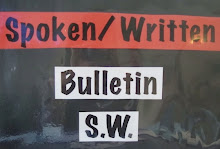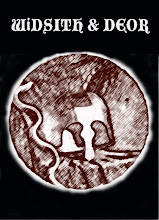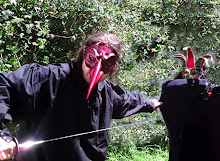Nobody can truly learn from another’s experience in the way that people mean when they say ‘I’ve suffered so you don’t have to’. But by hearing what the person in question has to say, they can, I guess, at least make some kind of judgement. People have asked my advice, or what I think from time to time about writing and publishing a book (or books) as someone that's done so. So here’s a summary. Writing the book is easy. Of course you need to have reasonably mastered a good to excellent standard of spelling, grammar, character, plot, technical or experimental competence. To have an idea, a passion to write, or rather to write actively. And of course to have finished the damn thing. But that part – if you are a writer, i.e. you write because you must – is the simple part. The proof reading, editing, back cover blurb writing, page layout, page numbering, prelims and all the rest is the really dull grinding bit. The printing is the really stressful bit…And the selling is the actual hard work.
So what does the real hard work that now begins, involve? You ring shops, venues, places that may or should be interested, T.I.s for local interest links, museums if it’s a historical novel; only some are interested, some (overloaded with such enquiries) aren’t even polite! Some will take it, but on terms where you make no profit…You spend the next months delivering books, designing posters, putting them up, handing out flyers, trying to remember to take books with you wherever you go. When the weather’s not too cold or wet and when you’ve time from your other commitments, you hold stalls, make free gifts and give them away, make more signs, outdoor ones this time, put the price up when you realize how little you’re making for the sheer work you’re putting in… You write or e-mail and tell anyone acknowledged in the credits perhaps, for instance thanking them for inspiration – don’t expect a reply! It’s polite to tell them you’ve mentioned them, but well known authors/broadcasters or whoever are notoriously busy, and it could fall by the inbox. A good idea is tell the local rag and write some interesting copy for them – they may well take it. Many say it’s good to have a working relationship with whoever deals with local events news on the said paper regarding any signings and stuff. In my experience though, most of the publicity you’ll have to do yourself, but a mention in the paper does help.
Next is organizing events at which to promote and sell the book – whether signings and readings at bookshops (if you’ve opted for an ISBN) and have persuaded some bookshops to take it, or events which are basically shows, at which you sell the book at the same stall you have for the programmes and any other merchandise. One writer I know had some fantastic t-shirts on sale for a winter tour of one of his books! So for the event/s in question, there are the tickets – a box office or printing them yourself? Flyers, more posters, cards, rehearsals, checking technical stuff like sound and any lighting…spamming people you know, know of and hardly know, a notebook so people can join your ‘mailing list’ if they wish…and a load of other tasks that properly belong to a performer’s blog. Even after all this – once you’ve put some in shops which take all the profit – and taking into account everything from a folding table to new printer ink at a £160 a shot for a decent laser printer cartridge – you’ll have to sell all of the first print run to break even. The question you then must ask yourself is – can you face a second? Time to sit down and work out the maths of costs; if you broke even, made a loss, or profit… Then looking at the issue of a bigger print run vs. more travel to more events to sell it, and…..
Remember – the first print run may have been a success, but some at least were sold to people you know…the second print run will be mostly sold to strangers. Yep, that’s right – it’s going to be even harder…the one thing that will make it easier is all the stuff you learned during the first print run.
I guess that may answer the question - how come the average sales of a self published book are 100-150… And the next question must be not - how come more people don’t publish their own books, nor how come so many do, but how many go on to the second print run…..?




